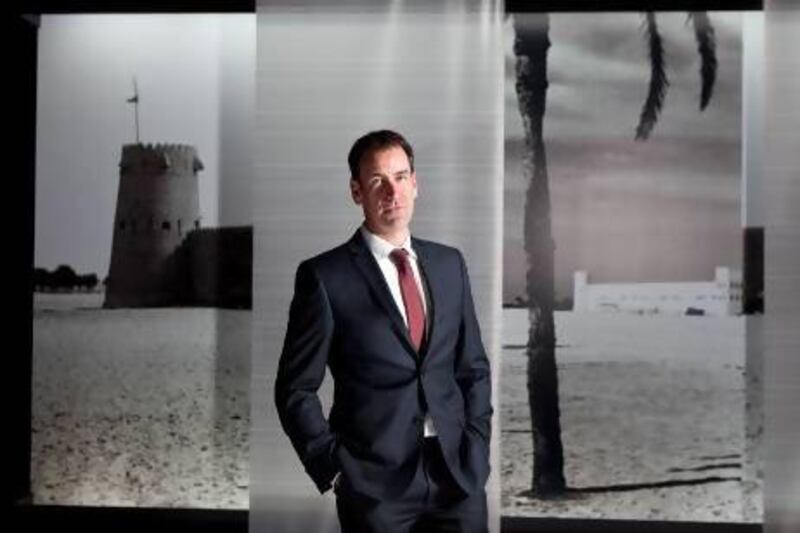ABU DHABI // Qasr Al Hosn was built using coral stone from nearby reefs and mangrove trees – materials that are environmentally protected 250 years later, complicating restoration work at the old fort.
It is a dilemma heritage officials have to deal with while ensuring any work is historically accurate.
“It does pose a problem but not a problem that can’t be overcome,” said Mark Kyffin, the architect behind restorations by Abu Dhabi Tourism and Culture Authority.
The fort is to be repaired or sections replaced in line with international conservation standards.
Mr Kyffin and his team have spent six years analysing the design of the fort, and the type and source of materials used. While it may be not be possible to use local sources for some building materials, particularly the coral used for the walls, there are other possibilities.
In certain parts of east Africa, for instance, it is permitted to buy coral stone to help balance the local eco-system. The same rules apply to mangrove poles.
“If we have trouble obtaining them, for whatever reason, it is acceptable under international conservation standards to use a different material as long as it’s not trying to masquerade itself as being mangrove or coral,” Mr Kyffin said.
There is as yet no fixed date for restoration work to begin.
Mr Kyffin and his team have used their time to make mock-ups of new sections of the fort that will be built using traditional materials.
The first, which uses coral and mangrove as well as traditional mortar made from sand and seastone, is now on display at the Qasr Al Hosn exhibition, running this week as part of the festival.
“We will be doing a series of mock-ups so we can test them climatically and test different materials to get the right mix, the right texture and the right source of materials,” said Mr Kyffin.
Another goal of the restoration work is to codify some of the key skills involved in traditional building, like the knack of knowing where to place certain coral stones for greatest structural integrity, or coating mangrove poles in a paste of crushed dates and fish to protect against termites.
“We need to replicate those skills and stop them from becoming intangible,” said Mr Kyffin.
Almost every generation has carried out their own renovations at Qasr Al Hosn. The most recent and most extensive work took place in the 1980s, when some sections were fortified with concrete.
Mr Kyffin said that while some more inauthentic renovations would be reversed, other recent alterations may need to remain.
“Some of the 1980s works, which are clearly concrete, may have to be left because removing them will do more harm than good,” he said.
“They’re also part of the story of the building. In 100 years the works that have been done in the 1980s will have greater historic value than they do now.”
In addition to the old fort, the tourism authority also manages about 90 historic buildings in the emirate, including several archaeological sites.
Aqeel Ahmed Aqeel, a conservation manager at the authority, said it is giving priority to Al Jahili fort and Mohammed bin Khalifa House in Al Ain, and Maqta fort in Abu Dhabi.
“To maximise our efficiency we have a priority of three or four buildings,” Mr Aqeel said. “But this is not fixed and we need to keep adding different sites.”
Conservation work on the UAE’s historic buildings began in earnest in the 1980s as traditional dwellings faced the prospect of demolition, or falling into disrepair.
“People moved out of their old houses and into relatively luxurious villas and apartments,” said Peter Jackson, the architectural adviser to the Ruler’s Office in Sharjah.
“They wanted to improve their quality of life.
“There was a time in the 1970s when the old buildings were thought to be inferior.
“It’s only because of a few people who understood the huge cultural importance and the urban historical importance of keeping these buildings that people now realise they have enormous value and need to have new uses.”






